Having looked at the route itself, some more thoughts around the design and more.

What’s missing? It’s easy to cover what’s en route but sometimes the question can be what isn’t included? Lots of France for starters, the race covers a diagonal swathe and excludes a lot of the country. This isn’t new, after all the early editions followed the outline of France and only ventured inland for the start and finish in Paris. What’s striking this time is both the extent of the geographic concentration and the trend, the route follows a narrow band within France and so did the planned 2019, 2020 and 2021 routes. Brittany might be host to several French races, teams and plenty of racing cyclists but it’s not easy to get the Tour.

Now the race can go where it wants – Henri Desgrange loved to send the race along the new German border in an act of defiant nationalism – and Christian Prudhomme’s dogma is entertainment, during a moment on stage with Marion Rousse they spoke about the importance of TV ratings.

If there are few time trials, perhaps 2024 will probably have more, an Olympic warm-up but however much you like them, they’re to TV ratings equivalent what rain is to a beach ice-cream vendor. It’s a contrast to the Giro with its three time trial stages. And that’s a good thing. Now maybe if you are crewing a nuclear submarine or going to the International Space Station and you have the luxury of picking which month you’ll be away and can’t decide with only which race to watch as the swing factor… then it’s an issue picking between both races. For the rest of us, we can sit back and soak up both and the contrast should be richer.
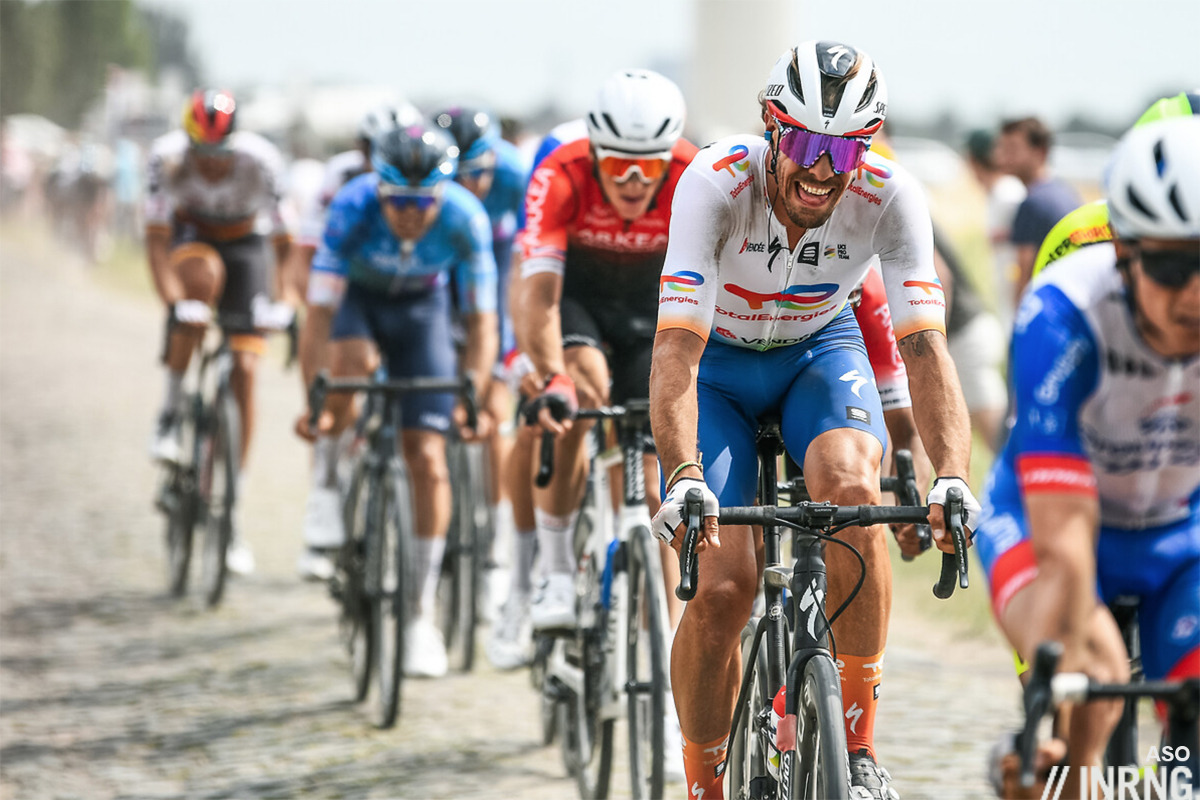
Another absence is gravel and pavé, also absent from the Giro too. With the Tour route skipping the north, no cobbles. But other parts go past vineyards, there are some dusty tracks. But no. Probably because there’s enough spice on the route. It’s if the race goes north that the chance of cobbles, ribins or other things increase.
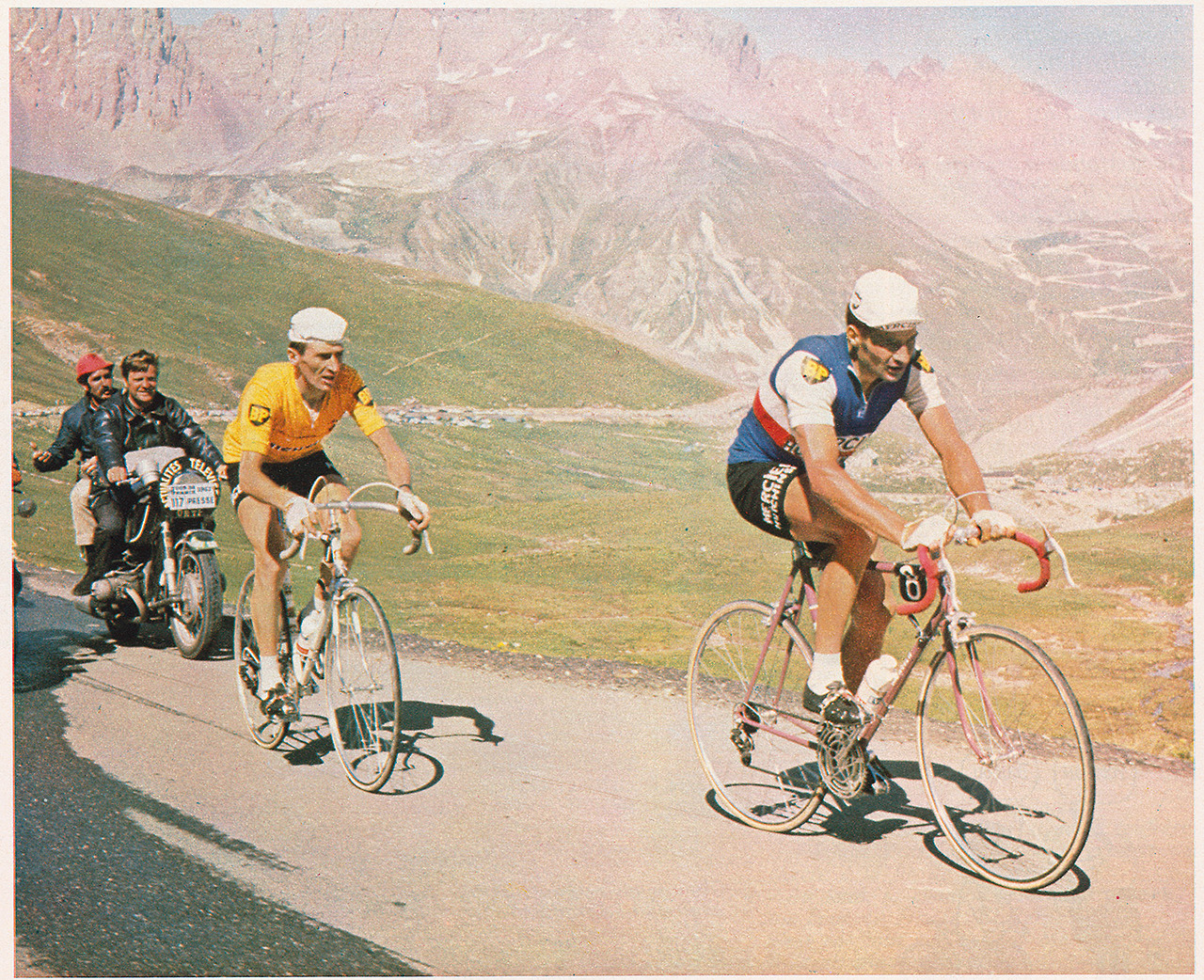
Also missing are many of the legendary climbs. There’s the Tourmalet and some regulars but no Galibier, Ventoux, Alpe d’Huez et al. Instead they make way for “new” ones, literally with the Col de la Loze which is a ski piste and service road that’s been tarmacked and requires more visits to establish it as a name. The Grand Colombier’s an old road but has only been on the Tour’s route for a decade.
The 2023 Tour de France route is also a nod to history passing places associated with André Darrigade, Luis Ocaña and Raymond Poulidor. Will the 2083 Tour de France celebrate passing through the towns of Arnaud Démare or Julian Alaphilippe? Maybe less so because pro cyclists today aren’t the national figures they once were, for example very few front consumer advertising campaigns. Plus society is a lot more mobile these days, riders move around and have less of a sense of place.
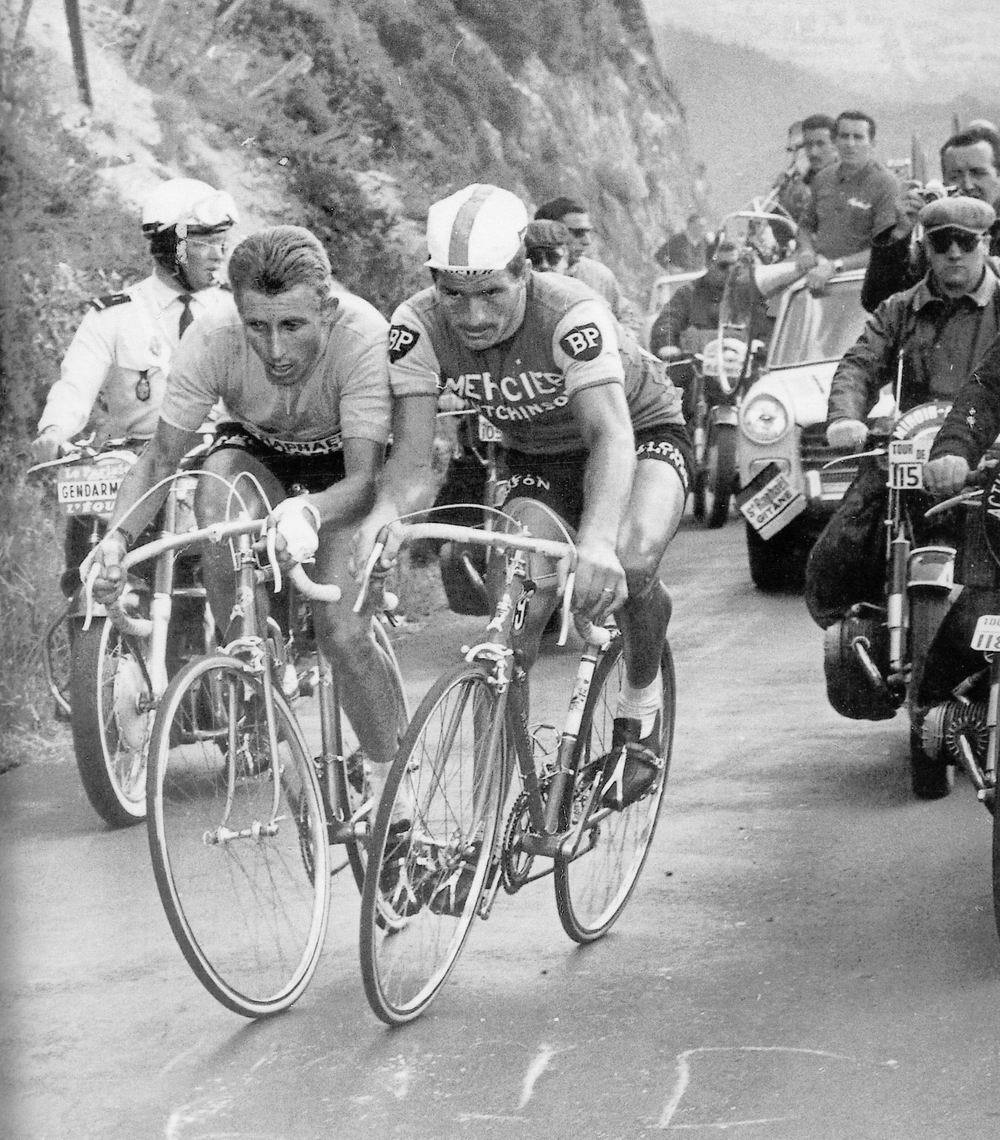
Obviously the Puy de Dôme is the novelty, at least because it’s back for the first time since 1988 and revives all sorts of Tour history. When he was first hired by ASO, Christian Prudhomme says the first thing he typed on his computer to check the keyboard worked was was “Objectif: Puy de Dôme”. The construction of the railway, the volcano being classified as a park and a general “non” from local politicians meant it was off the route for years. But the Tour’s changed its finish line system, this enabled it to revisit the Col du Granon last summer, also a protected environmental site. And a change of politicians led to discussions reopening. It makes you wonder which place might be next?
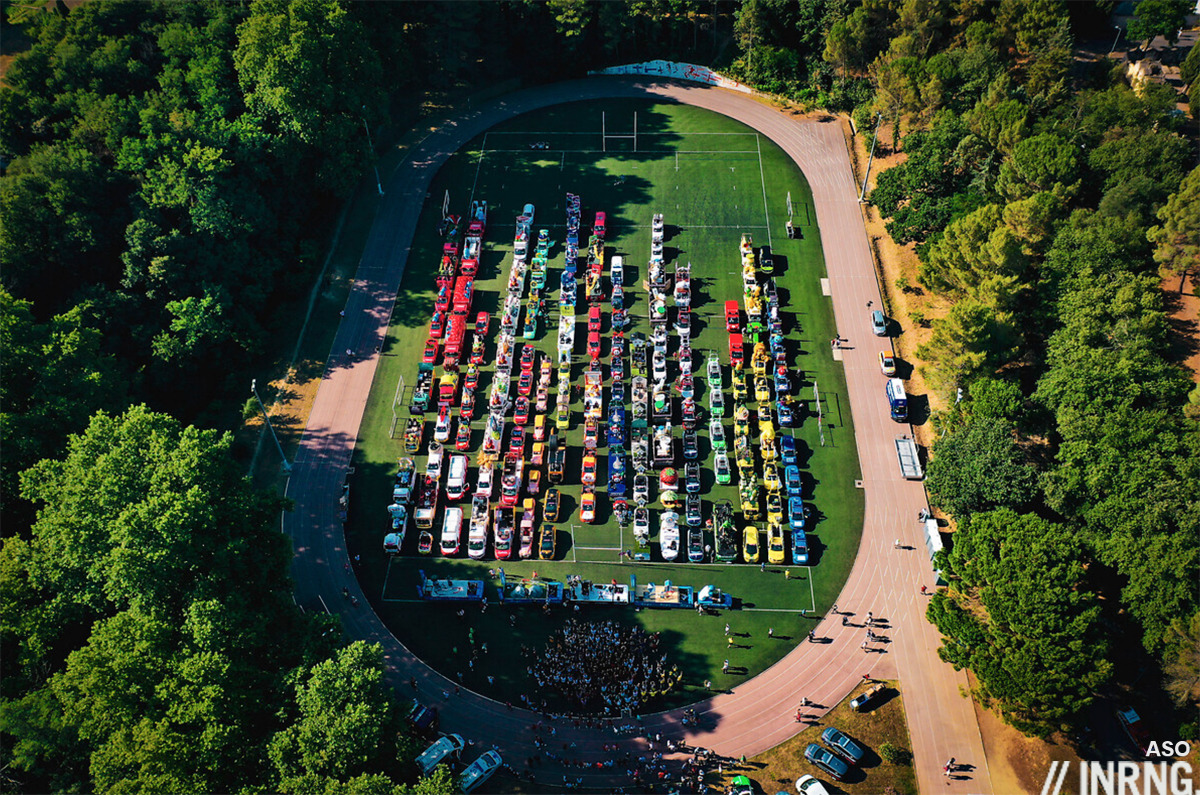
That might have had some wondering about which peaks the race could now visit. But the return to Bordeaux is notable. As suggested here before, French electoral politics matter because mayors and regional governments are the customers of the Tour de France. There’s been a big shift with several long-standing mayors voted out and in their place is a wave of Green politicians. They’re not homogenous, some remain sceptical about the Tour with its giant caravan of vehicles, the way roads are closed for the day in order to promote corporate interests, whether race sponsors or despotic team owners, and so on. But the sceptics have been a force demanding change, it explains why the podium ceremonies have changed, and a push to make the race less polluting. Bordeaux’s said yes to the Tour, other cities might do too.
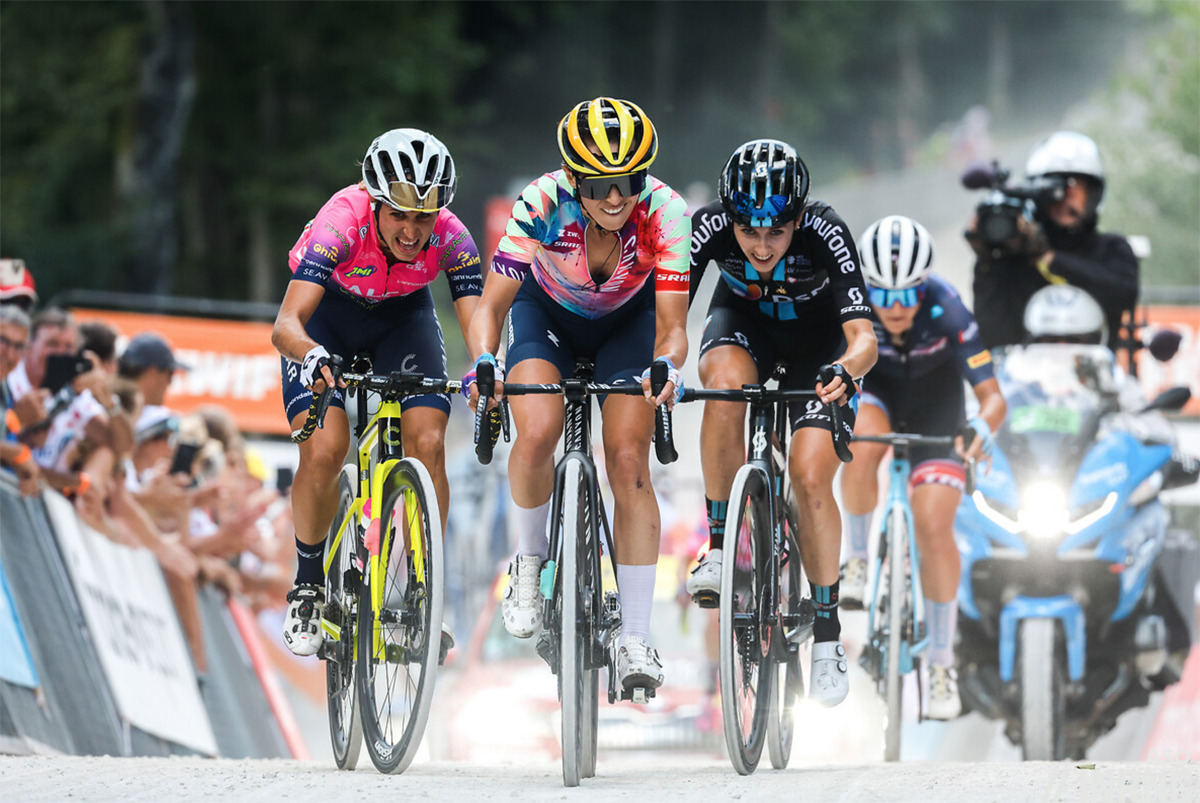
The same politicians have also been a big driver of the relaunch of the Tour de France Femmes. You can’t see the men’s route without thinking of the impact on the women’s race and vice versa. ASO has already been cross-selling Paris-Nice and Critérium du Dauphiné stages where possible, a town that hosts one of these races for a day to can often get a stage of the Tour a year or two later. Now it there’s the Tour de France Femmes as well and this opens up new opportunities. For starters the TDFF can go where Paris-Nice and the Dauphiné can’t. But it’s also working the other way with towns keen to host the women’s race because it’s got big exposure on TV in its own right and mayors can show support for a race in a way that hosting the men’s race doesn’t bring. The Tour de France Femmes is limited by the eight day format for now it’s unlikely to have a long transfer mid-way but it can plot an interesting route that includes any mix of terrain they want. Both races spend a lot of time in and around Clermont-Ferrand this next year.
One difference between the men’s and women’s races is the femmes get all the profiles published while the hommes don’t, only the profiles for the big mountain stages are supplied. It’s like this every year though. If you’re planning a holiday or a recon ride you can work out more stages by going via the local press in France as town halls and regional offices leak out more detail on the routes and the Gruppetto forum also has a good go at synthesising every stage too. Expect the final route and all the profiles and maps to appear in May.
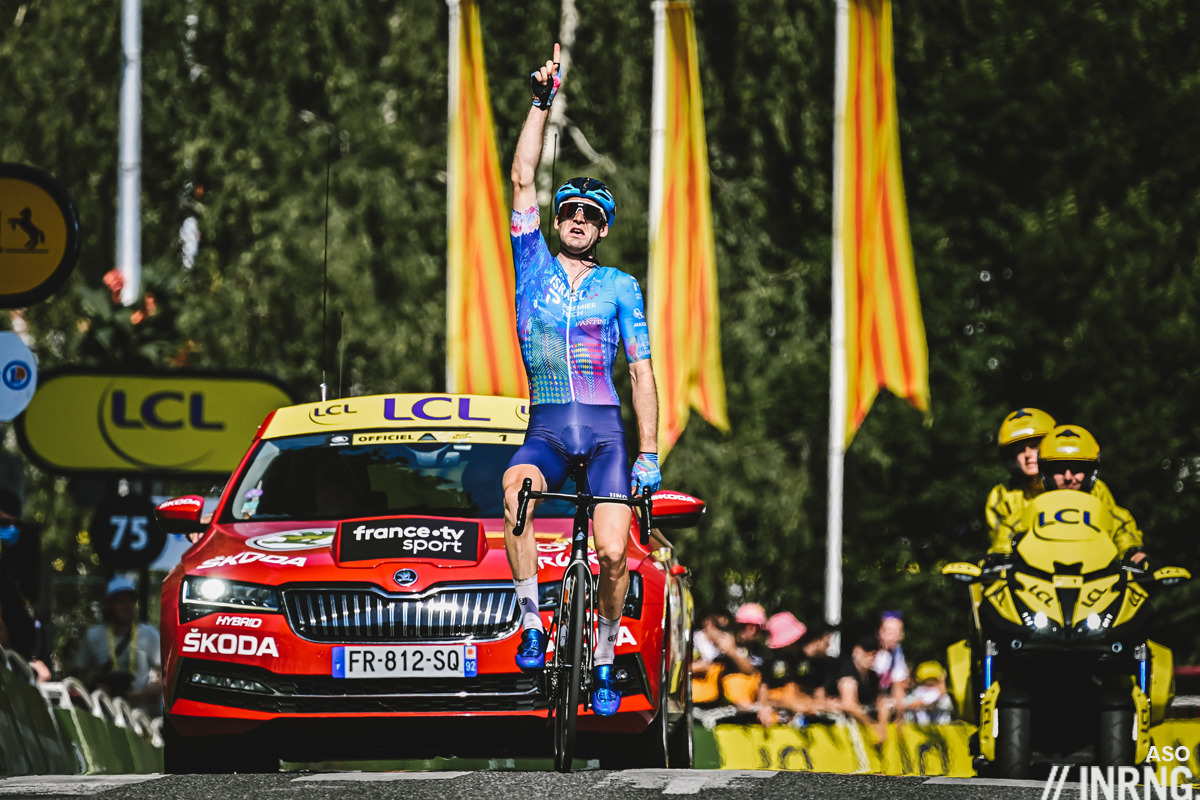
Lastly, there’s the question of who will ride? Assuming all 18 teams get WorldTeam licences for 2023 in the coming weeks, then Lotto-Dstny and TotalEnergies get the automatic invites and they’re bound to take them up. Which leaves two places. Israel-PremierTech have a great chance having won two stages last year. B&B Hotels got selected in their lean years, so bringing Mark Cavendish all but guarantees them a spot. But if the B&B team doesn’t land this mystery new sponsor, and doesn’t secure the millions it needs then even if B&B Hotels has said it’s onboard for another year as a sponsor the team’s cut links to other sponsors like Brittany then they might find it tough to get a licence and keep existing riders, let alone an invite. Hallo Uno-X?

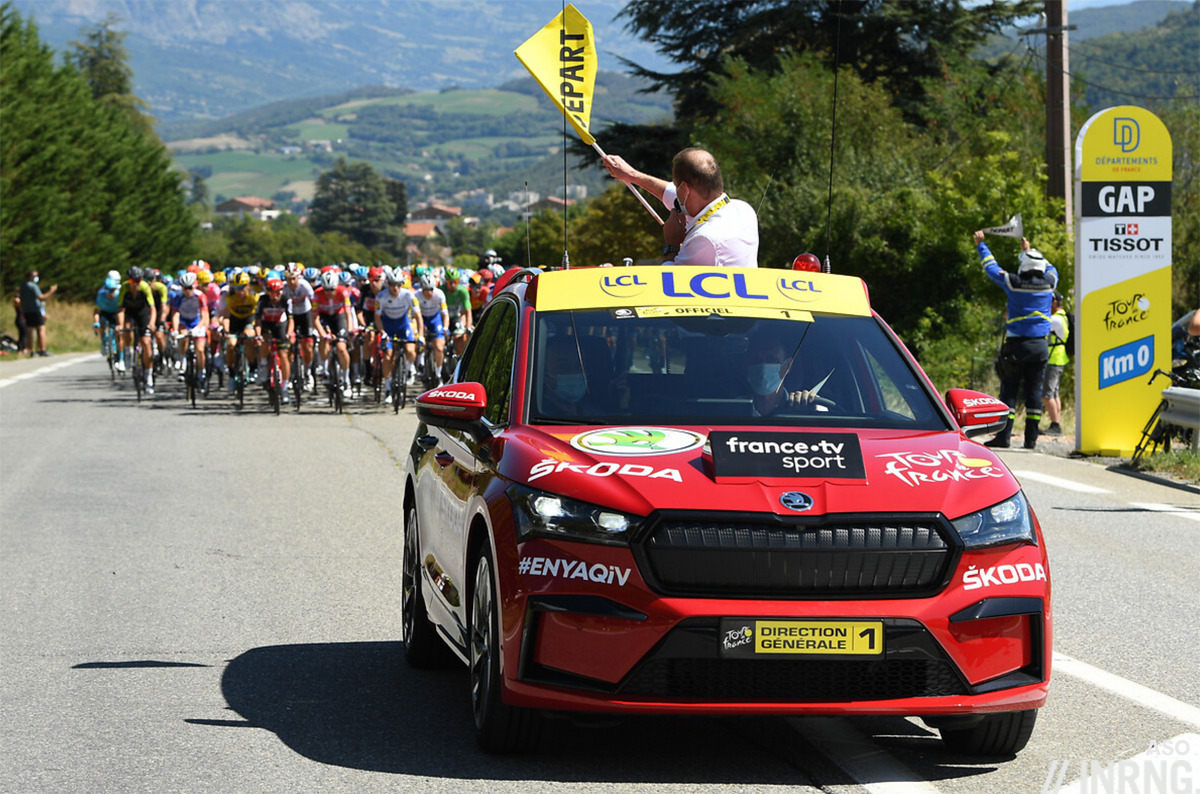
If the Giro route was designed to make sure that Remco Evenepoel will do it, the Tour is designed to stage an epic fight between Vingegaard and Pogacar, with the scales slightly tilted in favour of a Pogacar revanche. If all goes “as planned” Pogacar will gain an upper hand with bonus seconds and Vingegaard will strike back on the big mountain stages (14th and 17th).
I have absolutely no problem with that design!
Another thing is the total absensce of sidewind stages where the peloton could be split and where the big strong riders could be sorely needed.
The route is also probably as good as it gets for the French GC hopefuls. A podium place for Bardet is certainly not out of the question and I don’t that either Gaudu or G. Martin found anything to be particularly unhappy about.
Shame about Brittany, though.
Is there absolutely no chance or very little, of crosswinds during the flat stages in the first week? Perhaps someone with some local knowledge can enlighten us? Otherwise, let’s hope it’s not 40C.
It’s likely to be calm, it’s not a naturally windy place. Would require some weather system in place for this to happen, eg a front coming in from the Atlantic. But it is often flat and exposed so open to the slightest breeze.
The problem, and I think it’s a problem though most probably don’t, with the route is that without TTs, TTTs, cross winds, cobbles or anything else is if the race is ridden defensively then you’ll end up without gaps. Which I suppose looks good when they put the top 10 up at the end of the stage and it’s covered by 20 seconds, and it gives the imaginary impression that the likes of Bardet and Martin might still win. But to me it just means nothing has happened. Anyway, I’m sure Pogacar and ‘Vingygo’ will keep us entertained.
Yeah, whatever happened to the TTT? While not a big fan of a lot (or super long) ITT’s, the TTT’s a different animal IMHO. A team has to decide on “horses for courses” in a different way than mountain trains. How many big chronomen do you include to help with TTT vs riders who would be far more useful when the roads tilt up? The riding skill requirements and strategy are more challenging vs ITT and for me, much more interesting to watch. While they’re at it, they can require TTT teams ride normal roadbikes rather than these insect-like contraptions used on ITT!!
It’s an interesting, difficult TdF, but a Gran Boucle it’s not. More like the Gran Ligne Droite. I respect the CP’s efforts to modernize editions, but let’s see if this is a once off of a real trend. Last years edition was brutal for the sprinters, now they’ve added another 10k meters in climbing. Sprint train teams who could stage hunt at the TDF will find their opportunities very limited. I understand how this is interesting for the GC battle, but for the different types of riders who have made a career of sprinting at the Tour, this trend will put an end to them. I do love the contrast between the Giro, unfortunately the prestige differential to the outside media leaves a big whole for sponsors sending top tier riders to Italy in May. The Tour documentary series will on exaggerate this discrepancy. The sport is in desperate need of eye balls and Euros for survival.
Yeah, but next year sprinters have really *a lot* of very very flattish stages doomed to end up in a sprint, which will also make for a self-fulfilling prophecy, so it’s just about making the time cut, a pretty reasonable requirement these days. It’s true that short mountain stages are precisely more of a challenge in terms of avoiding OTL, but it’s really the bare minimum we should ask a pro rider…
“Doomed to end up in a sprint” seems kind of shortsighted IMHO. Should they ditch the points competition while they’re at it and just have what….mountain stage after mountain stage? You find nothing interesting about a stage in which sprinter’s teams might try to distance rivals on small climbs, or in cross winds or by going full-gas on the front? No interest in how they form up for the final run-in to victory? No respect for the men who have the entire team’s hopes riding on them as they wait, wait, wait for the perfect moment to pay them all back for their efforts? No enjoyment when they get it right and celebrate afterwards while their rivals ponder how it all went wrong. No respect for the men who do all that work so another member of their team can take the glory? No respect for something that’s not a simple watts/kg test but requires power, skill, tactics, teamwork? Do you ever bother tuning in to watch this, or just fast-forward a replay of the final 100 meters on sprint stages and then write “doomed to end up in a sprint”?
Did you wake up on the wrong foot this morning? Please re-read first the comment gabriele replied to and then read his comment again!
“Doomed to end up in a sprint” is what was written. In my native language DOOM is never good or positive so IMHO this disrespects the sprinters and their teams no matter which side of the bed I got up on this morning. There’s a lot more to cycling than just who can ride up the mountain the fastest in case you’ve not been paying attention.
W I Velocisti!
In “doomed” above the negative is related to the process rather than the result. A still “good” sprint can be the result of a tight fight and conflicting efforts, or the way too scripted conclusion of a “procession” (cit. Inrng). The latter is what I’d call “doomed”, as, for instance, the “doomed” breaks you have under those circumstances: it’s not that breakaways are bad or those athletes deserve no respect, it’s rather that one-sided situations are a bit depressing… perhaps too similar to real life 😉
Yeah Larry, I love all that, as I recently pointed out here, and of course I’m aware (as I also wrote here) of the mere necessity of having some stage were part of the field eases up. But the point is precisely:
– this TDF’s got too many (just as this Giro, and just as in other editions they were too few, which was also an issue). Say, 3-4 “sprint gifts” plus 2-3 they should fight hard for looks enough
– “doomed” hints precisely at the fact that this time they pretty much lack that sort of properly placed small climbs or clear crosswind options, then of course climate change can spice things up and the racers can split the bunch anyway, or, better said, the bunch may allow a break a free ride in a flat day all the same…
– what have we lost for all those sprint festivals? Surely not the hardest mountain stages (the hardest TDF feels they are able to go these days, I mean). Rather, it’s mid-mountain, tricky stages which were reduced, and packed too early into the race, when they can’t deploy their full potential impact.
I had to reverse my initial opinion after having the opportunity to look at the mostly sure route of the 2nd week stages which ASO hadn’t unveiled in detail, plus depressing Le Bress (and, as inrng wrote, even Poligny can appeal only to the desperate). At first, those 2nd week stages were hinted at as three hilly stages, but than it comes out that two of them are really bunch sprint material. That “little” shift was what tilted the balance for me. Also note that the excess of way too easy sprint stages in the third week makes it “too light” as a whole, one of the clearest flaws of this route in that it ignores fondo and recovery deep in the race. You don’t need to have all GC stages, but surely it comes handy to have a serious hilly stage which *might* end in a sprint for those who have deserved it, or be won by a Classics man, helps in keeping the pressure high and make the most resistant GC man shine in the mountain stages which should follow.
Fair enough – your OPINION is there are too many sprint stages. My guess is guys like Cavendish might disagree. Any given route is gonna have someone who doesn’t like it for some reason. I’ve yet to read anything that suggests that it can’t be a route that incentivizes RACING and tactics rather than a watts/kg test, so for now it seems OK but only in hindsight will we be able to see how it unfolded.
And, Larry, I like a good excursus as or more than anyone else, but the whole thread was about replying to this sentence:
“Sprint train teams who could stage hunt at the TDF will find their opportunities very limited. I understand how this is interesting for the GC battle, but for the different types of riders who have made a career of sprinting at the Tour, this trend will put an end to them”
…which frankly doesn’t mirror reality at all, not under the current state of things at least, and in a way that isn’t just about “opinions”.
The fact that ol’ Cav would love 21 sprints to leave Merckx well behind, or that Quaranta might consider a comeback if only they offer him some downhill 50km long stage, or that Kuba would like more China-like stages at the TDF now that his team and he are WT, well, may I see that it’s quite much irrelevant for the above.
Back on a more serious note, just check some further facts & figures below as a re: to West if you please.
My guess is that Alaphilippe will be looking forward to it.
He should like descents, some are tricky indeed, and the absence of authentic mountain marathons or much altitude, plus a soft 3rd week, and this kind of ITT, obviously, if he finds again those special TDF-legs. But I think this is too climby for him, even more so with such an opposition. Yet, yes, he could try to go for yellow in Bilbao, that’s one of *his* finales, albeit against premium rivals, no doubt, if both Vans start and hit top shape, besides Pogi himself of course. And he could keep yellow (or regain it) between there and Puy de Dôme, but the latter could already be too much of a challenge (against these GC men). If he falls back in GC, he could try to grab a stage in Morzine thanks to the descent, and, as I said, he should like the ITT, too, unless that level of 2019 performance was the “once in a lifetime” kind.
In regards to the race trying to become less polluting. Next years route seems to have very few significant transfers between stage. And several days where the race spends time in the same area, meaning the riders and caravan can stay in the same place for several days. In Bilbao, Clermont-Ferrand and Saint Gervais, the riders can stay in the same hotels for 3-4 nights. The riders will like this and the shorter transfers. But it also means that the whole setup around the race has to move less, and that will cut down on emissions from the race. Whether this is the start of a trend, or just a coincidence with this years route remains to be seen though.
Yes, this is a good feature of the 2023 route as well. It’ll help mean more rested riders, even the media will have more time and reduced emissions. ASO seemed to be saying to the media this was a plan but the test is as you say whether this is a trend or not.
Vegni started like that years ago when he began to direct Giro, than as recent maps show the trend partly went in a different direction, although he’s still sensitive to the question. Despite the Rome thing (which has more than anything a symbolic meaning: however, that sort of huge transfer is typical at Tour and Vuelta and nobody apparently noticed before, although climate change was already an hot theme), even a Giro like 2023 mostly has reasonable transfers, and, if one wanted, both Campania and Veneto sets of stages would allow staying at a single hotel to tackle the whole area (which, it must be noted, isn’t necessarily the most emission-effective option, it depends, but it’s good to be able to consider it, at least).
As a matter of fact, I hadn’t even noticed that even this year Le Markstein is some ~500 km away from Paris – probably map scale and generalisation misled me (“well well, up there in the North of France, more or less”). That is, less than the 700-some kms separating Tarvisio and Rome, but surely not an impressive difference. Poor Vegni was grilled for that, while for ASO it’s just business as usual ^___^
I think Euskaltel – Euskadi is also a candidate for one of the wildcards because of the Grand Départ. With their team in the peloton, the Basque fans can also “set the Pyrenees mountains on fire”, like decades before, which is good for the whole race.
As much as I’d like to see the orange jerseys, I’m not sure that the team is quite worth a wild card. They were rather invisible and unimpressive in the Vuelta and we probably shouldn’t expect a giant leap forward in 2023, there is no significant increase budgetwise and there aren’t any young or new riders of whom we could expect more,
Besides, there are more Basque riders for the fans to show their support for in the WT teams than in Euskaltel-Euskadi 🙂
Agree. You would have expected this year’s Depart in Copenhagen would have made UnoX a shoo-in, since it’s a Norwegian/Danish sponsor.
But it would be fantastic for the Orange to fly high in the early stages..
Maybe if ASO expanded its geographic footprint of races more, we could expect the wild cards and Tour stages to reflect that. Dauphine and P-N host towns certainly benefit, so maybe wild cards could go to teams in those areas too.
I wonder if the poor viewing figures for TTs is the lack of information and, hence, no real story or tension around the competition. Compare and contrast the coverage of the World Rally Championship or Downhill MTB. Both events manage to show split times, in real time to the 100th of a second, comparison of split performances, real time leader boards etc. Perhaps ASO need to get Red Bull involved to borrow some of their technology.
It could be as simple as hiring en experienced TV director of cross-country competitions (where interval starts used to be the norm and still constitute a big part of the race calendar)
You need to place the cameras just before and at the split timing points and the finish. This will provise suspense and drama that can actually be experienced. Viewers can see the riders approach and this will allow them – or the commentators 🙂 – to make a quick mental arithmetic and then the timing will tell where the rider is and whethet there is a rising or falling trend.
You would naturally have cameras at other, tricky or intresting parts of the course, but the pictures would be broadcast only when nothing of interest is happening at the split points. And if you want to follow a star rider or sto show someone crashing or suffering a mechanial, you can choose to do so, live or in quick replay.
Come to think of it, I could probably do it…
Good points. Shocking how recent editions still had production issues which made it more entertaining for the experienced fan to follow some ITTs on procyclingstats or twitter than on TV ^___^
That said, and speaking of fan expertise, RCS discovered some years ago that ITTs gather decent TV ratings on weekends, which is hugely surprising and still challenges my intuition no matter how deep I think about it (is it about people keeping the TV on without really watching it on Sunday after the family lunch? Is it about hardcore cycling fans going riding? I went checking several variables, fo example thanks to bad weather, and its really hard to draw any sensible conclusion). OTOH, it looked like that the worst day to have an ITT in audience terms is on Tuesday, especially after the rest day. Which is exactly where ASO decided to have the one and only for 2023.
All the above, and much more, led me to believe that organisers are slightly less interested in TV ratings than we usually think, or even than what they declare. Or, better said, that they manage a whole set of piorities, among which viewing figures are more of a general concept, or even “an appropriate excuse”, rather than being a factor they *really* want so so so bad to maximise (at least in France, while in fact RCS looks a bit more worried by the subject, probably because ASO can give for granted their impact, while RCS can’t).
However, and as a partly separate note, an interesting aspect is that organisers also want to *show the show*, especially when more people are watching, that is, when they know they might get good TV figures, they love to show a crowded roadside. Look how many are watching! Look how enthusiast they are! It’s really a key feature of the cycling show (herd effect, double identification, self-reinforcing feedback and so on). This often (not always) generates some contradictions, because what’s good for the roadside might not be good for TV: big mountains are good for TV but may be remote; ITTs are often good for the roadside fan, not necessarily on TV; ditto for town circuits (depending on how you draw them) etc. Plus, external factors which you can’t control but will multiply this effects, like weather. Sometimes it’s about balance, sometimes it’s about “compensation”: you usually don’t get good viewing figures in the very first stages, so it becomes paramount to have impressive roadside crowds, which are more easily assured by foreign starts and/or cycling hotbeds. The Danish start was great, as at the Giro some years back (Amsterdam, Ireland and Denmark were all good… then came the money grabbers and the sportwashing), and of course expectations are already very high for the Basque country.
How do they track broadcast TV (as in RAI in Italy) vs streaming (Eurosport, etc.)? As I noted awhile back we end up watching (along with plenty of our Italian friends…most recently here http://cycleitalia.blogspot.com/2022/04/giro-di-sicilia-2022.html) Eurosport rather than RAI TV’s over-the-air broadcast. Do TV ratings include this? Otherwise broadcast TV numbers could be way, way down though plenty are following the race in other ways – possibly more than anyone might think?
I thought exactly the same as you, even more so in Spain where the cycling offer on public TV is less than in Italy, plus ES comes together in bundle with the most common Movistar pack for households. But then I was given some confirmed figures by Van Reeth and it looks like that, is so many other fields, the whole streaming and/or specialised channels thing still sits incredibly below the volumes attained by traditional media, unlike what our perception suggests, probably out of interested input and successful self-representation by the new formats. Change is happening, no doubt, but its scale is for now impressively far from what “we” imagine (a well-known bias in social sciences, and even so imagine that social science academics themselves are aware that their intuition is often biased by this same factor).
However, of course the phenomenon you hint at must be constantly tracked and shouldn’t be underestimated, either.
‘How do they track Tv’ well, the answer is, they don’t, really. The methodology for tv viewership by programme ( as far as I am aware) hasn’t really changed since the 1960’s. The data company recruits a panel of viewers, who record the programmes they watch. This data is then ‘ weighted’ ( ie fiddled about with) to ‘represent ‘ the total viewing population’.
As you can probably tell by the liberal sprinkling of apostrophes, this process is open to all sorts of problems, but the main one is the willingness of respondents to participate in such a process. It’s a major problem with all sorts of market research; rising costs mean there is far less actual interviewing , where a trained interviewer records the responses, and can so validate at least to some extent, the actual demographic of the respondent, and the likely validity of their responses ( a lot of self completion questionnaires are filled in by children, they like box ticking). Respondent fatigue, especially now every purchase seem to demand a ‘rating’ discourages participation as well.
So the problem is that the composition of any panel does not really represent the univers of viewers, because the casual, the lazy, the uncommitted, the privacy lovers are much less likely to participate, and of course, we have no means of knowing whether their choice of viewing is similar to the sort of people who do participate. And the so called weighting is increasingly ineffective, because the people deciding it can only use characteristics collected from the participants.
Of course, it is the same with all polling, at least in places with a secret ballot. That’s why it is so often wrong, and why exit polls, for example , reflect such a small proportion of the voting universe : because a lot of people do not consent, and no one can know if they are telling the truth.
It depends on the country. For the Tour de France, the French audience is measured by a device fitted on people’s TV that records exactly what they watch, for how long etc, so it’s not subject to such biases although there’s a sampling bias as numbers are extrapolated from the 7,000 or so boxes. Still, this method seems to report a fall in audience for TT stages.
Production could help a lot, split screens, graphics etc but you still need more to be at stake. Also remember a large segment of the audience is tuning in for the scenery and landscape so repeat shots of a TT course aren’t as good here either.
All just fine for TV, but while I’m sure the streaming companies track-the-hell out of their viewers, do they share this data with race organizers or TV networks, etc? I wonder if someone laid a graph of this decline in broadcast TV viewers over one that showed the rise of streaming service providers what it would look like? I also wonder if the gimmicky stuff the Velon cabal might propose would change anything for the better?
I expect the streamers will share their viewer figures with potential advertisers.
Sure, but aren’t the streamers kind of rivals to broadcast TV? So I can’t see Eurosport (who probably knows my bibshort size!) or those potential advertisers sharing anything with RAI or France 2/3 about how many viewers they’re in some ways stealing from broadcast TV.
How a race organizer could gather all the viewing data across various platforms together to see exactly what kind of viewing “share” (I guess that’s what the experts call it?) any given stage is getting seems a bit of a black art or at least open to some interpretation…meaning marketing-maven bullspeak.
In my example we’ll switch from RAI to Eurosport in the middle of a stage or vice-versa, depending on what’s actually on-screen or who is talking.
But you still have to recruit people who are willing or indeed want to have the tracker installed, so that is a psychographic skew.
” more entertaining for the experienced fan to follow some ITTs on procyclingstats or twitter than on TV ^___^”
Yeah, I do that.
Cause, let’s face it, even for a die hard fan, most ITT coverage (in stage races) is boring as hell. The whole event spawns over hours, some watchworthy ITT specialists start in the first hour, then there’s another interesting rider 2h later into the race and 1h later we finally reach the top 10 riders to watch. In between all we can see are riders who just do their job on the same meanwhile known course (to viewers), filled with Kirby laughing about his own lame jokes and same old stories by co-commentators. Nothing of which could glue me to a tv screen for more than the top 10, and split times and milliseconds overlays for GC rider 45 vs. 95 won’t change this.
Agree, though returning to the initial posts in the subthread there is tension and interest to be had in TTs which can be captured by appropriate televising of riders with accompanying relevant graphic information.
Yet nearly all TTs are televised to the same tired and boring formula which includes the often maddening hopping about from rider to rider; ignoring drama in realtime [say, a GC rider tackling a short and sharp climb or a technically tricky section] in favour of the fixed camera showing random rider X approaching a timing checkpoint; and slavishly following favourite riders [however rubbish] while ignoring completely those who are on a good ride, perhaps surprisingly but by no means always so.
Far too much televising of road cycling is unforgivably complacent and lazy while plenty of other sports innovate and progress seemingly remorselessly.
Its a good route for many teams. Jumbo and UAE will both fancy the chances of their leaders. Its good for Quickstep because it solves the Alaphillipe+Evenepoel+Jakobsen conundrum, Its good for Ineos because they can play with their enormous dept of GC riders. Carapaz, Vlasov, Yates and Bardet will be able to work with this course. Gaudu, Martin will like the amount of TT Kms. Cofidis, Wanty and the Wildcards could see many chances for long breakaways. Demare and Matthews might see opportunities with harder run-ins on potential sprint stages. And it’s a playground for Van Aert and Van der Poel. That said I see O’Connor, Landa, Lopez and Mas struggling with this as we never go to the high high mountain finishes. And Ewan, Groenewegen and Bennett might not see enough out and out sprint stages as they would have liked…
Stage 3 – 4 -7 -11 – 18 – 19 and of course 21 have less than approximate 150 m of total altitude gain on classifi-able “climbs” in the last 60 kms or more. The very last quite symbolic bump (often averaging less than 4%… not even “a climb” to me) is normally faced some 20 or 30 kms before the finish (19-28-38-17-12- 30… Paris…). That *must* be more than good for Ewan and Bennett, and even Groenewegen, given that the only “close climb”, 12 km from the line, is also among the easiest, 2km at 3,2%. Stage 8 and 10 could be brought down very easily to a sprint of sort, surely enough for the likes of Matthews or Demare, but I guess that the sprint teams might leave it to the break, sparing their energies for the stage after or the one before which offer more of a granted prize.
Superman López or Landa should only go for the stages, IMHO, and they have good terrain for that, especially if they manage efforts accordingly. O’Connor and Mas who aren’t that terrible at ITTs should have a go at the Giro… but they won’t of course ^___^
If TTs are so bad for ratings, and TTTs getting rarer, why not throw something new into the mix?
Team relay. 8 laps of a shortish circuit, each team member to ride in turn. Total team time to count.
The non-team TTT. Each team puts one rider in to make up a bunch composed of 18 riders, one from each team. This makes eight groups, each to ride a TT course together, so road bikes only. Of course the composition of each group is key, so it could be determined by lot, by sequential priority as supplied by each team, or by seeding and the jury.
Descent TT with no chain ( this used to be a thing in youth racing!!! )
Of course the manufacturers would hate not to have TT bikes on show, but really who rides a TT bike by choice?
I like ideas like these. I know I’m in the minority, but I liked the odd race formats from the Velon Series which I assume is permanently done for. There was a team emphasis that is underutilized in most races. I mean even where I race we do some points races and team points races just to mix it up.
Seeing that UAE have now signed Jay Vine, I reckon that Pogacar could do both the Giro & Tour and have 2 pretty good teams to support him. 2024 maybe?
Won’t the Tour have to move to accommodate the Olympics in 24 – likely earlier(?) , so unlikely for a double. The Giro looks hard in 23 too and may be the better race if it’s Remco v the climbers
2024 moving forward a week makes a Giro-Tour double attempt more likely I think. Less time means you have to hold form for a lot shorter period.
I suspect that Pogacar will be 110% concentrated on the TdF next year … Tour / Vuelta perhaps.
Very interesting points and I can’t wait to see next years’ big races. Especially the Femmes tdf looks amazing.
Inrng, thank you for adding the preview of it. The Tourmalet stage will be a monster. Plus the 177km stage should produce a very interesting dynamic.
Vive le 2023!